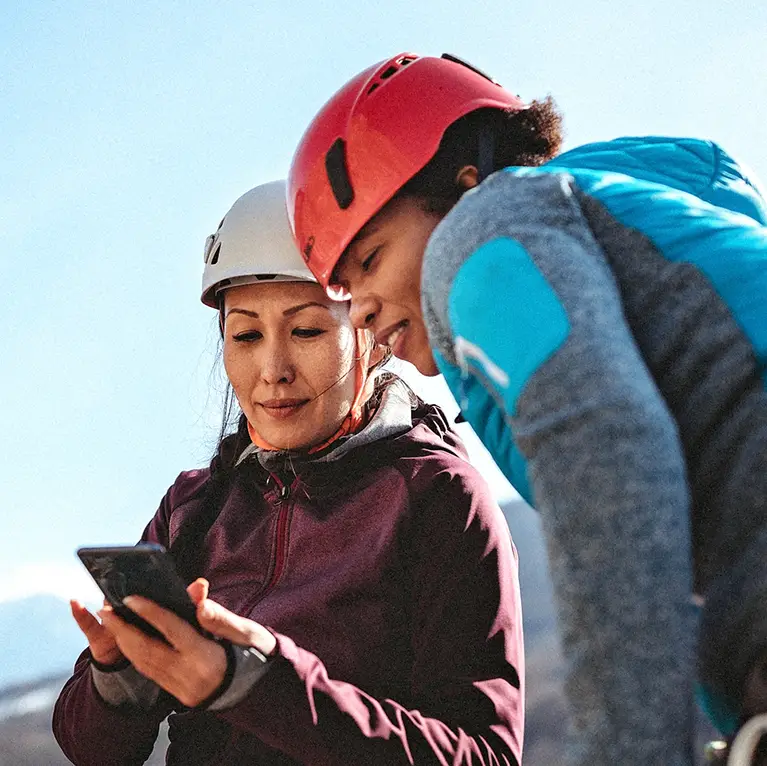Steep ice climbing blends skill, technique, and having the right gear. This article will walk you through tips and tricks that will help tackle steep ice—covering essential techniques, training tips, and how to pick the right equipment.
Gear Preparation and Selection
For steep ice, certain equipment is non-negotiable, and investing in high-quality, reliable gear will make a huge difference.
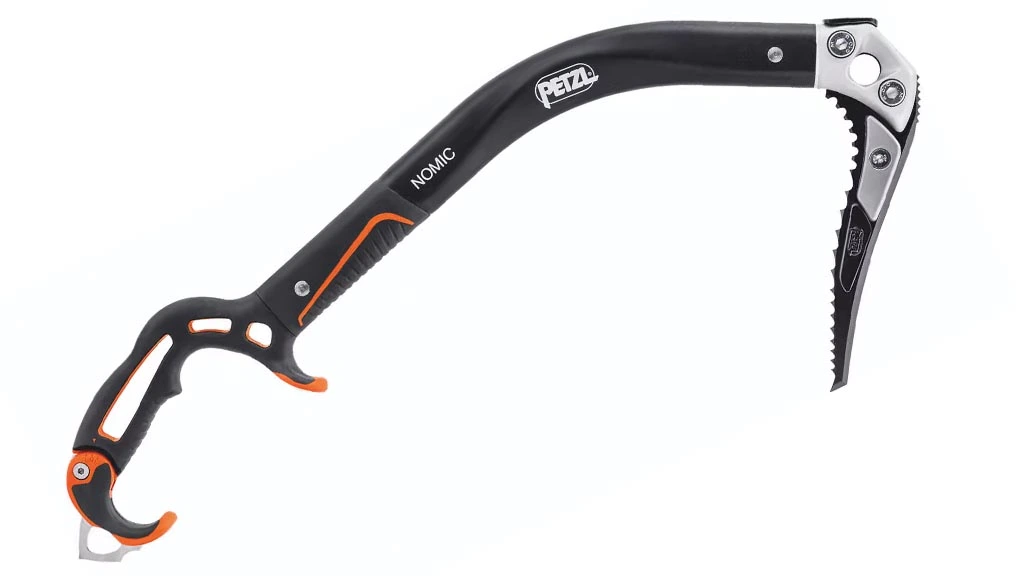
Ice Axes
When climbing steep ice, opt for tools with a curved shaft for better clearance over bulges and easier swings. Some climbers prefer leashless axes for freedom of movement and hand switches, while others like the added security of a leash.
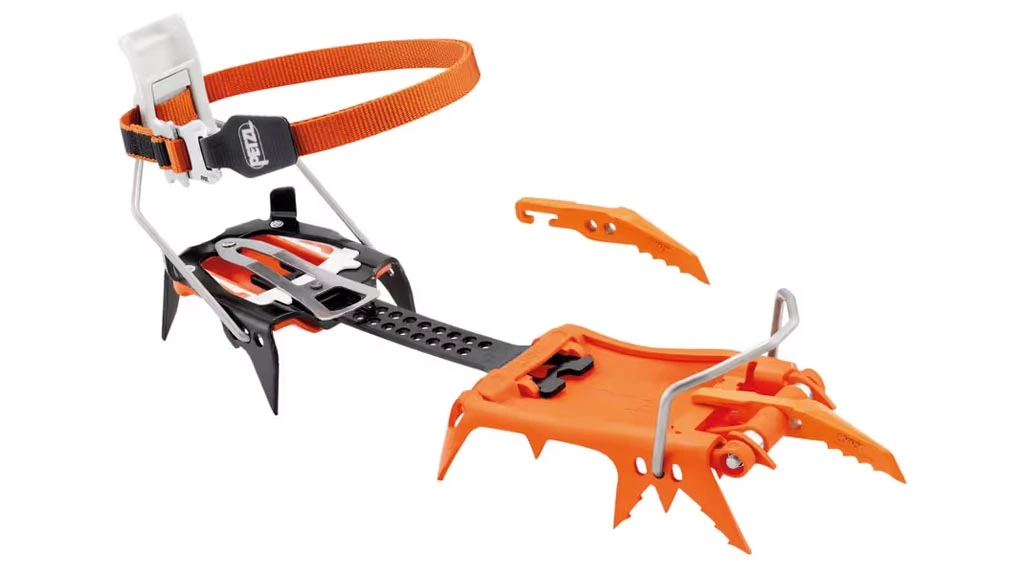
Crampons
For steep ice, go for rigid, mono-point crampons if you’re comfortable with them, as they provide more precision on smaller placements. If you’re new to mono-points, dual-point crampons can offer better stability and are often more forgiving for newer climbers.
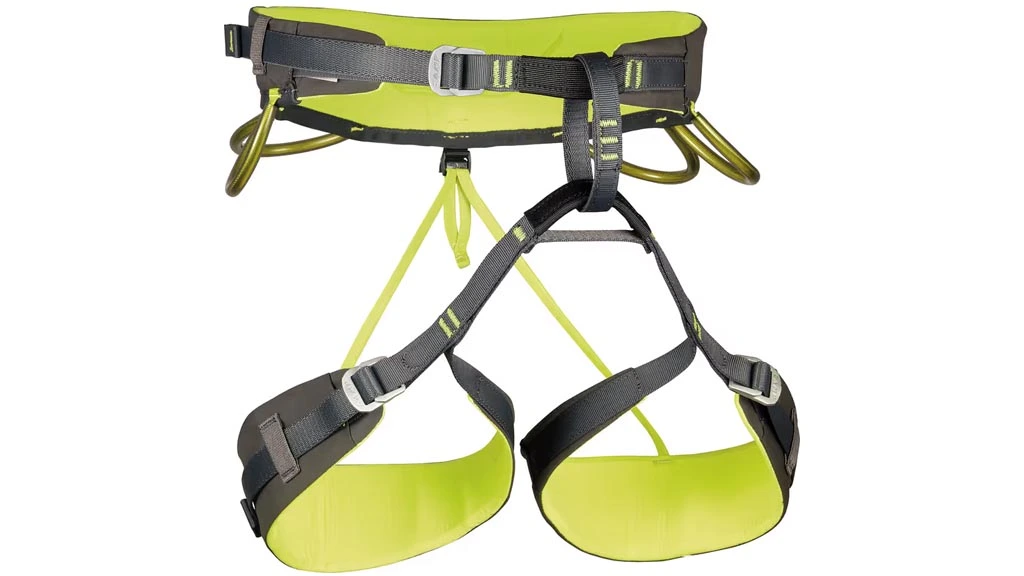
Harness & Helmet
Make sure you can fit a touque under your helmet. Make sure your harness fits well and is easy to adjust with gloves on. Most ice harnesses have extra space for adding ice screw clips.
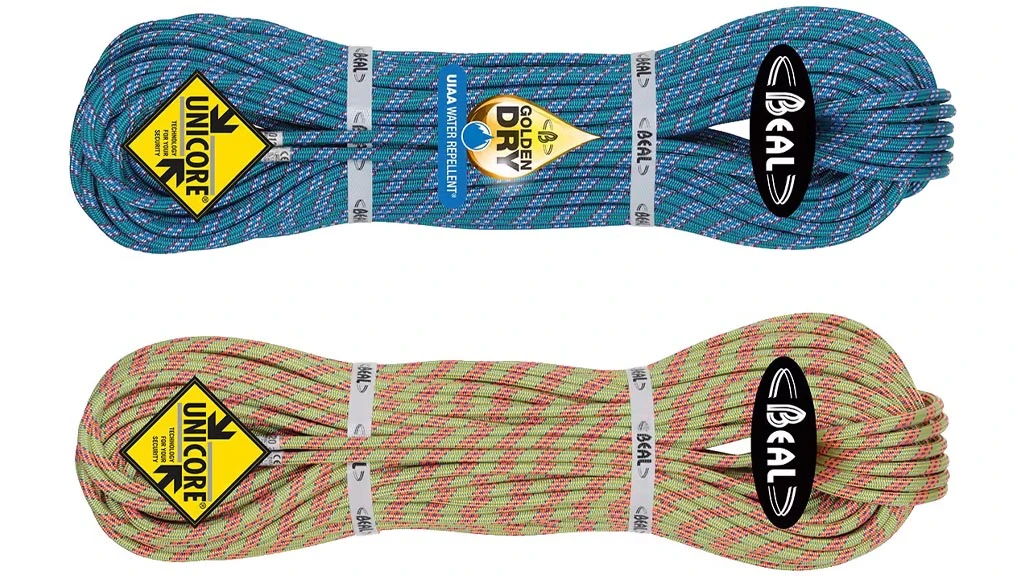
Ropes
A half or twin ropes are commonly used for redundancy, but not a requirement. Always carry a range of ice screws, with longer screws for softer ice and shorter ones for hard, dense ice. Always carry a 22cm screw for making v-threads.
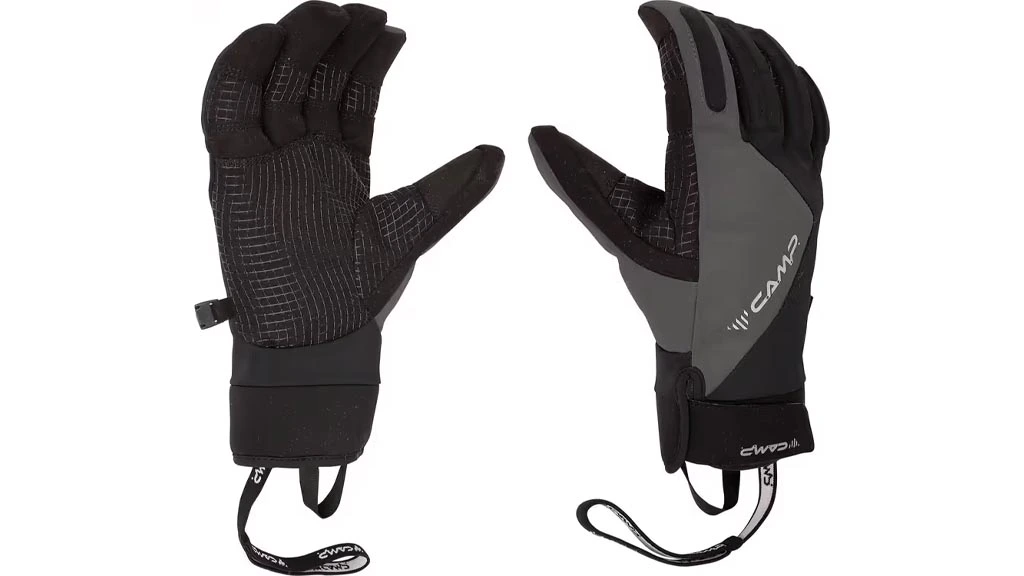
CLothing & Layers
Dress in layers to manage body heat as you climb. Gloves should be dexterous enough for handling gear but warm and waterproof. Usually carry at least two sets.
Mastering Body Position and Technique
Steep ice climbing requires a different technique than rock climbing or mountaineering on gentler slopes. Focusing on body position and maintaining balance is key to efficient and safe movement.
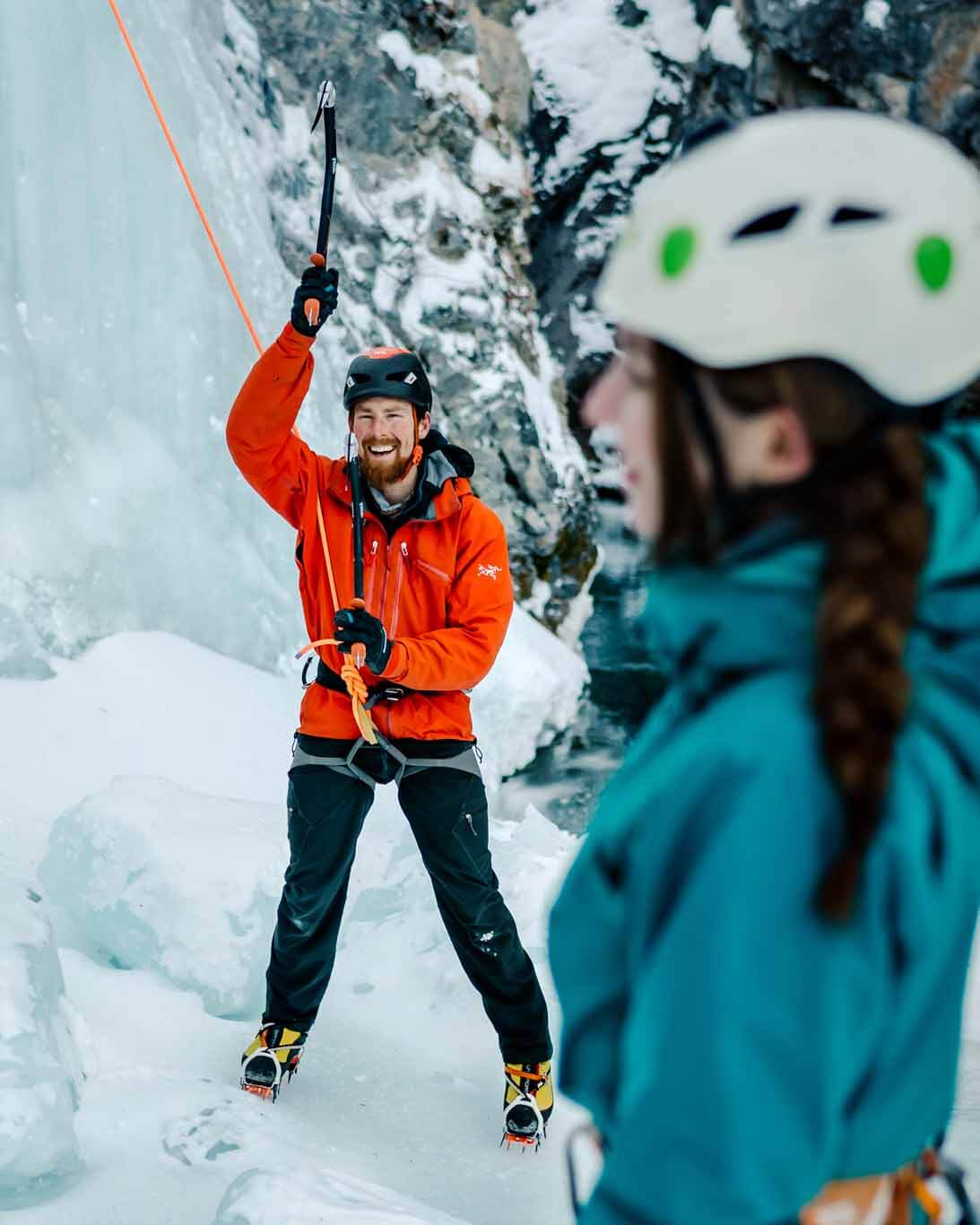
The Triangle Stance
Create a triangle stance by positioning your feet horizontally on the ice, with your hips close to the wall. This stance allows you to keep your body weight distributed over your feet and minimizes reliance on your arms. Place one ice tool directly above you and the other slightly below to create a stable triangle shape between both tools and your feet.
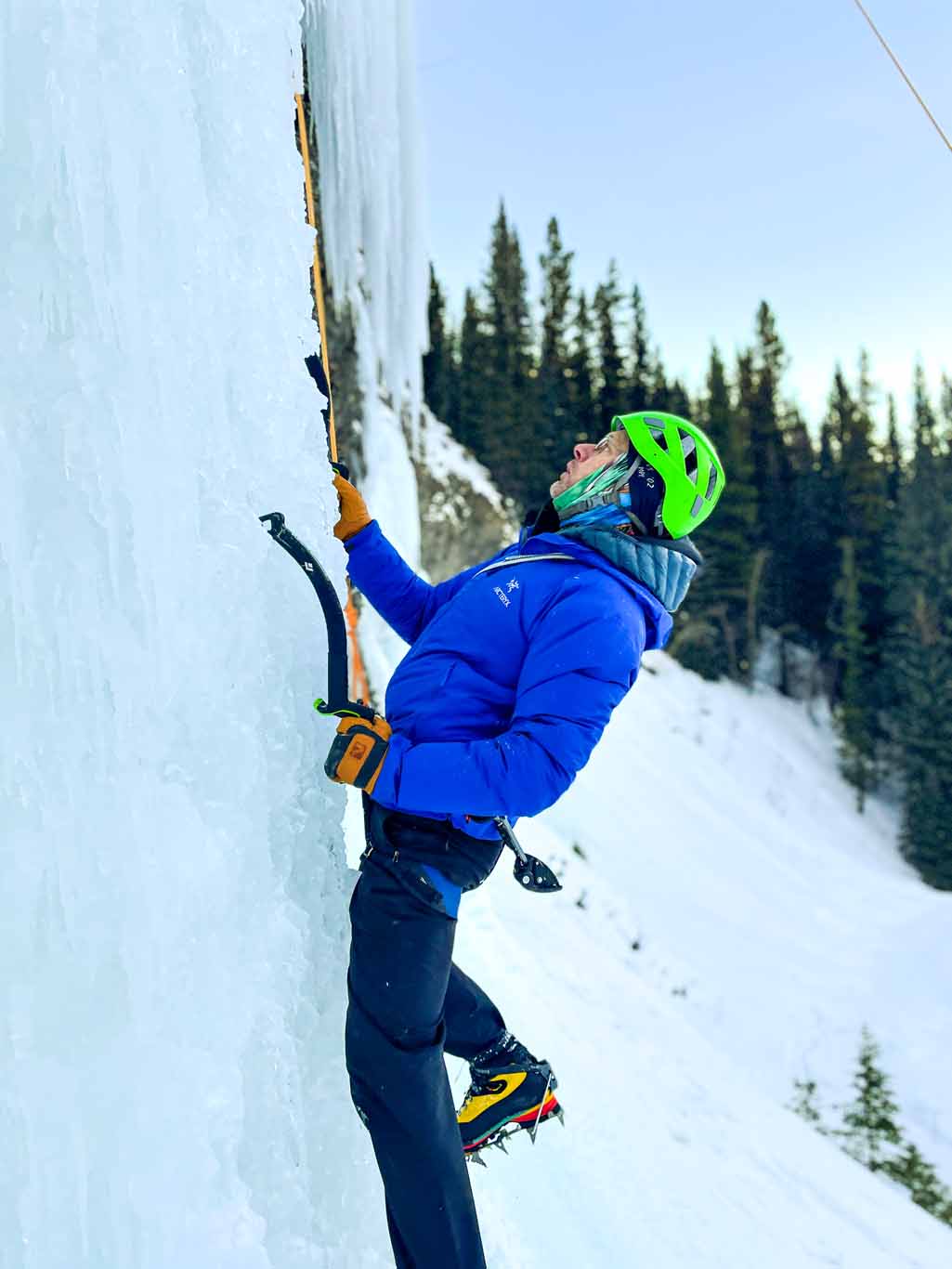
Keep Your Hips In
As you climb, try to keep your hips as close to the ice as possible. This body position reduces strain on your arms and shoulders and helps with efficient movement.
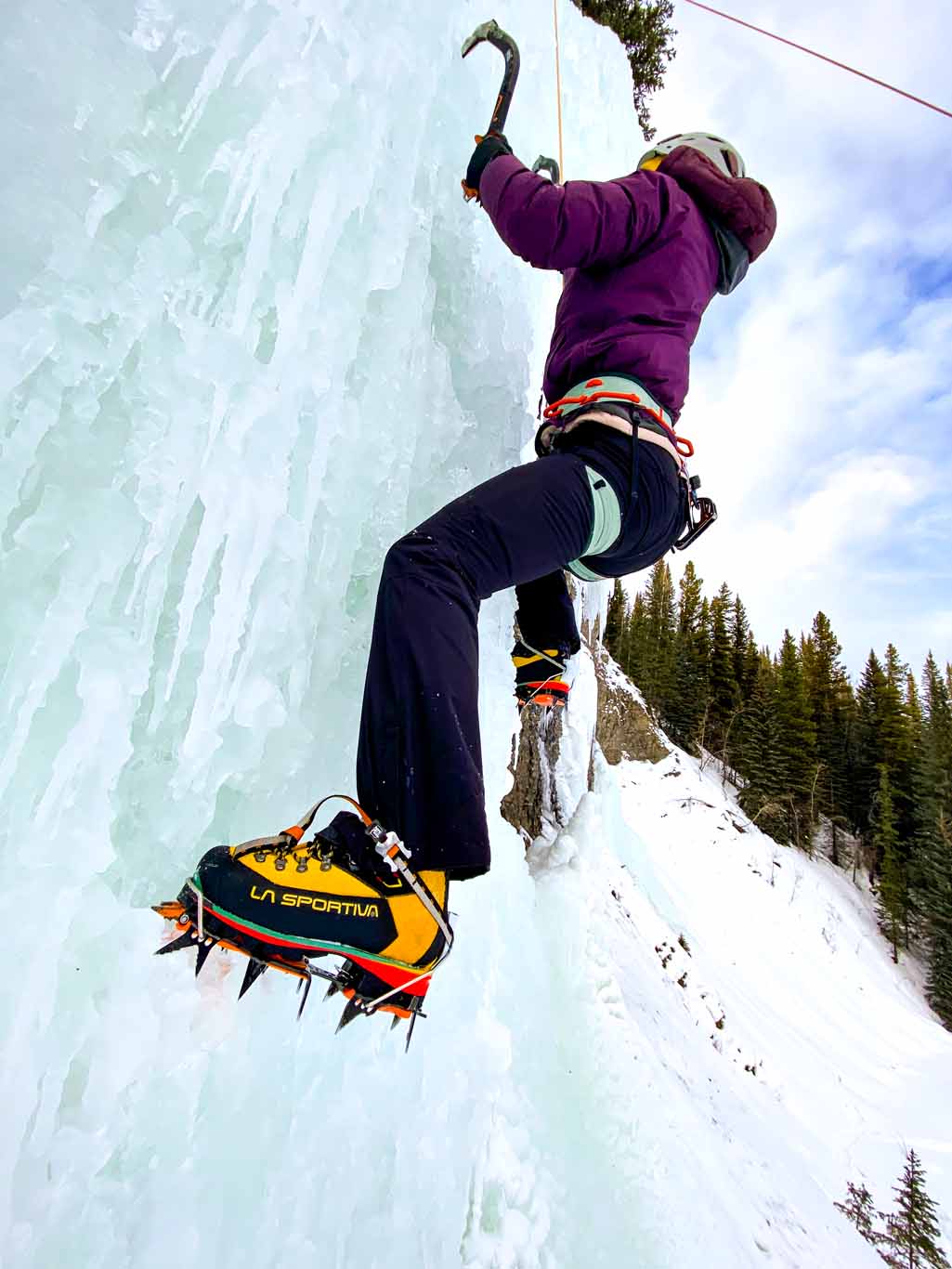
Controlled Kicks
When kicking your crampons into the ice, use a steady, controlled motion. Aim for the ice’s natural features, as softer areas will allow your crampons to bite in better. Engage your calves, and practice small adjustments to ensure each kick is solid.
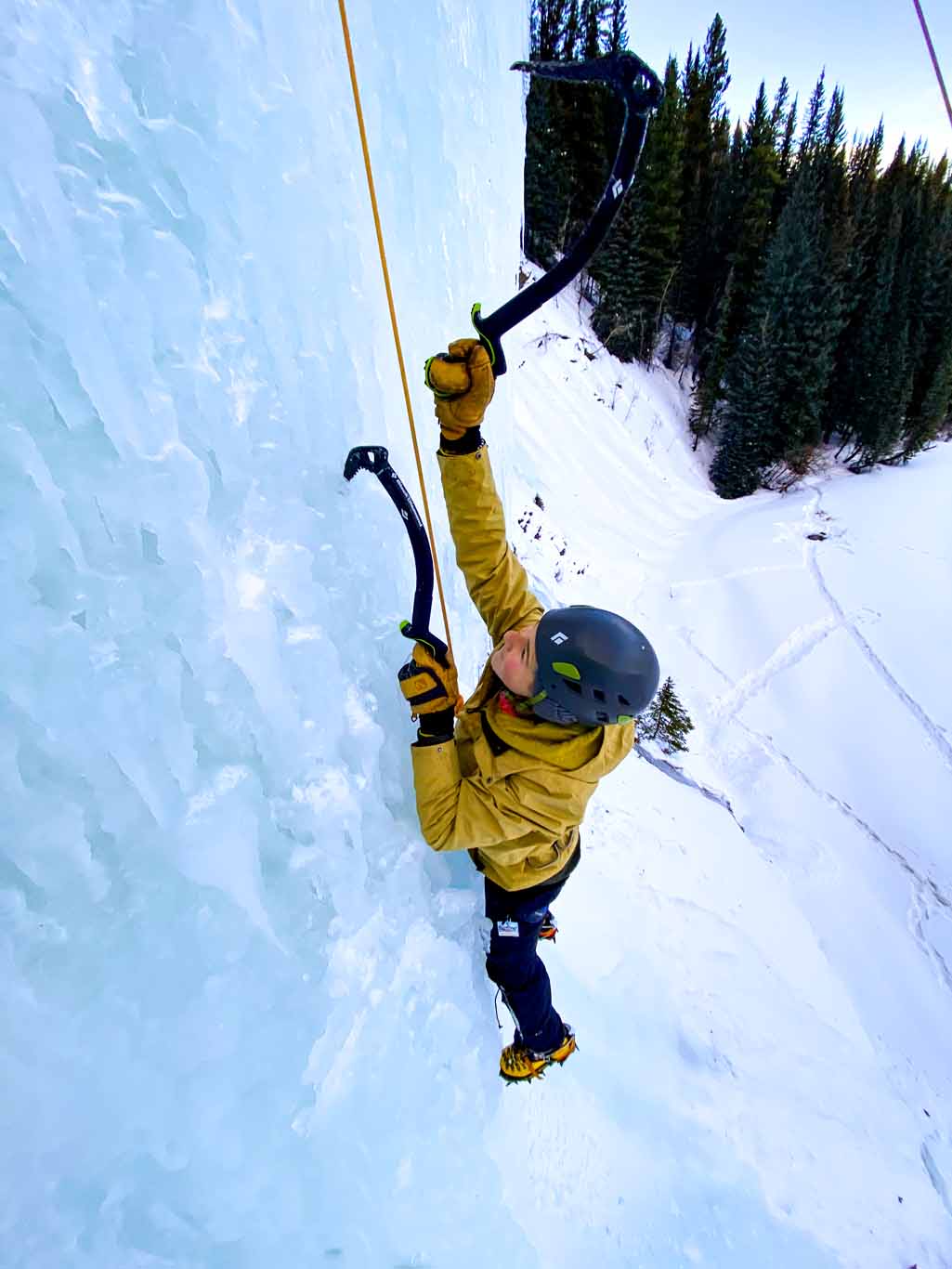
Minimize Swinging Tools
Over-swinging your tools can cause fatigue and lead to accidental slipping. Instead, use a controlled swing or wrist flick to sink your ice tool into the ice. Focus on finding natural lines, rather than brute-forcing your placement.
Practice Efficient Movement
The key to successful steep ice climbing lies in movement efficiency. Small adjustments to movement techniques can help you conserve energy over long climbs.

Pick Placement
Once your ice tool is in place, test it by giving it a slight tug before committing. This will help you avoid weak placements that could come loose under body weight.
Breathe and Rest
Make a habit of taking small rests as you climb. Relax your grip on the tools when you have solid foot placements to reduce forearm fatigue.
Keep Your Elbows Low
High elbows indicate that you’re pulling with your arms rather than relying on your legs. Aim to keep elbows lower than your shoulders and focus on pushing up with your legs for most of your ascent.
Setting Ice Screws for Protection
Climbing without proper protection can be dangerous, especially on steep ice where falls are harder to recover from. Ice screws are crucial for protecting yourself and your belayer on steep routes.
Choosing the Right Screw Placement
Place screws in ice that’s solid and doesn’t have air pockets. For steeper ice, screws can be angled slightly downward to help prevent them from popping out during a fall.
Screw Depth
Positioning for Safety
Strengthen Essential Climbing Muscles
Strong legs and core muscles are essential for maintaining stability and stamina on steep ice. Building these muscle groups and practicing proper form will improve your performance.

Core Stability Training
Exercises like planks, Russian twists, and hanging leg raises are excellent for core stability, helping you keep control on tricky sections.
Leg and Calf Strengthening
Leg and Calf Strengthening: Wall sits, squats, and calf raises mimic the muscle activation used in steep ice climbing, making them ideal for preparing your legs and calves for long stretches on ice.
Grip and Forearm Training
Steep ice climbing demands a strong grip. Exercises like farmer’s carries, wrist curls, and hangboard training build grip strength for secure tool handling.
Managing Fear and Building Mental Toughness
The steepness of the ice and exposure in ice climbing can be intimidating. Mental preparation is as vital as physical training.
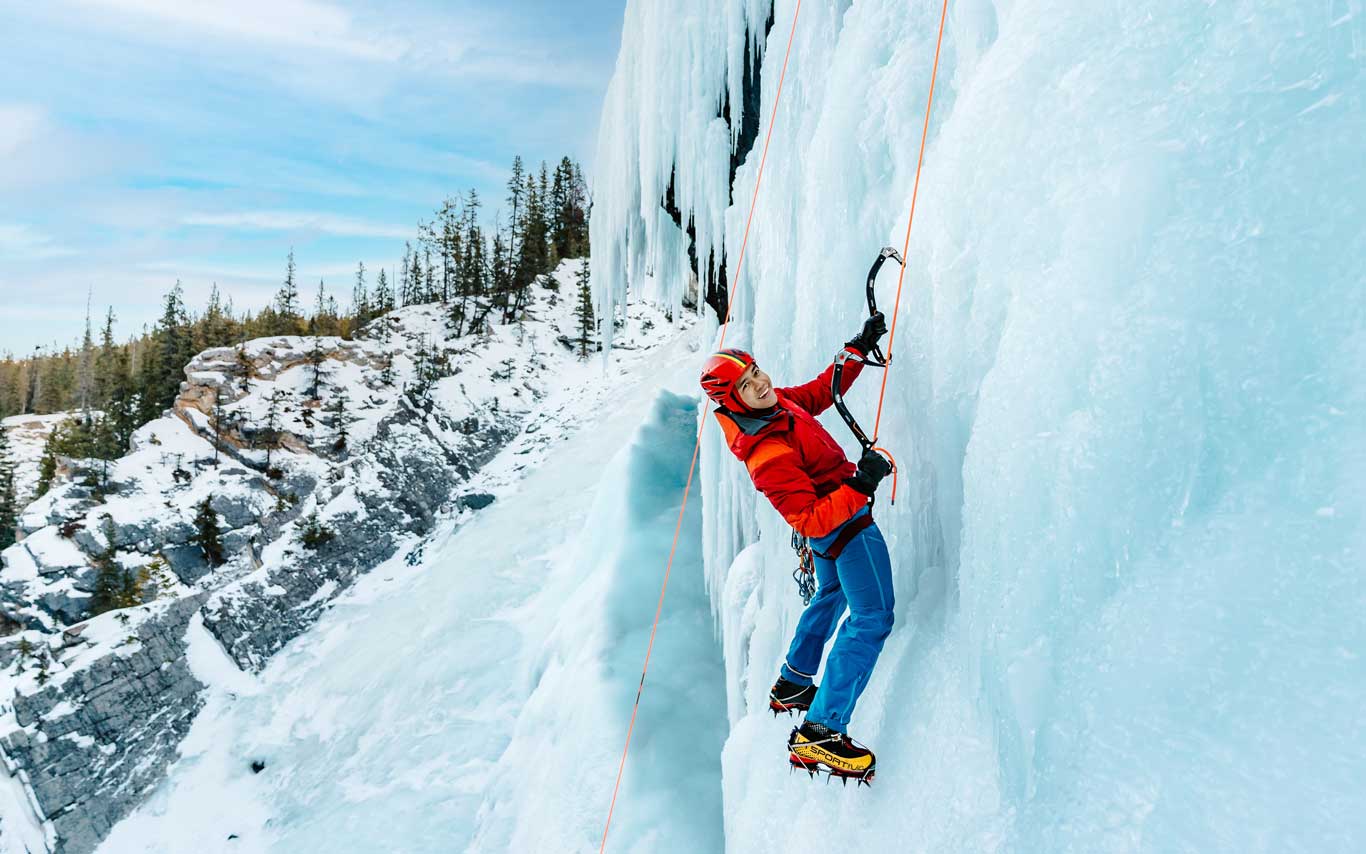
Visualization
Visualize each step, from placing your tools to making your next move. Practicing visualization can help reduce fear and build mental confidence.
Focus on Breathing
Conscious breathing can help you relax and maintain focus on longer climbs. In challenging sections, take deep, steady breaths to stay calm and reduce muscle tension.
Plan for Falls. THen DOn’T Fall
It is unadvisable to take true whippers on ice, if ever. Mentally understanding what falling with 30 or so points attached to your body is key though. Falling is part of climbing, and preparing with a skilled partner can help you manage fear when it happens unexpectedly on steep routes.
Final Tips for Success
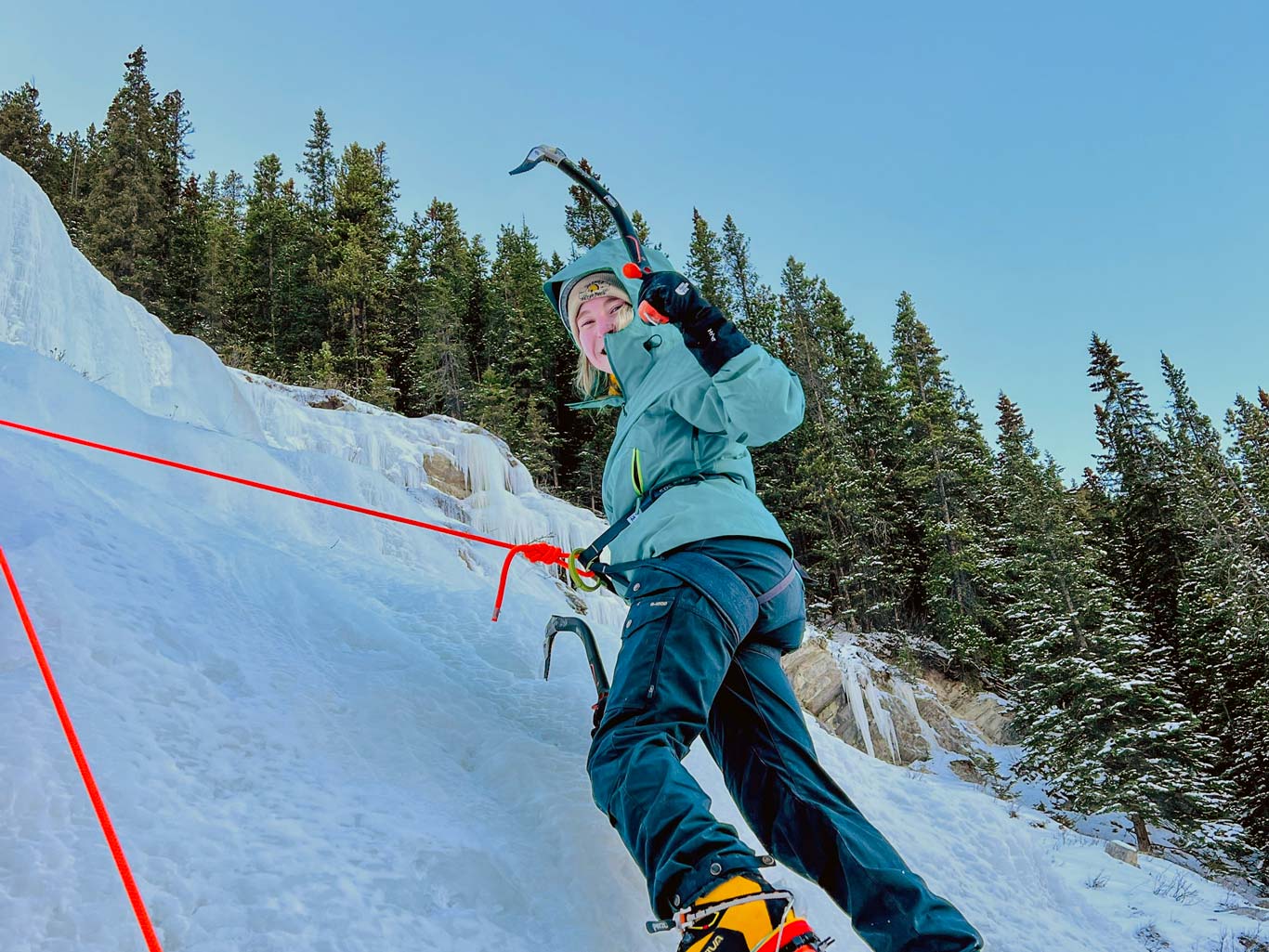
Start Small
Begin on moderate ice climbs to develop your technique and build comfort on the ice before tackling steeper routes
Learn from Experienced Climbers
Climbing with seasoned ice climbers or hiring a guide can provide invaluable insights into reading ice conditions, making efficient moves, and protecting yourself.
Continuous Assessment of Conditions
Ice can vary significantly from day to day. Assess the ice quality and weather conditions before each climb, and be prepared to turn back if conditions become unsafe.
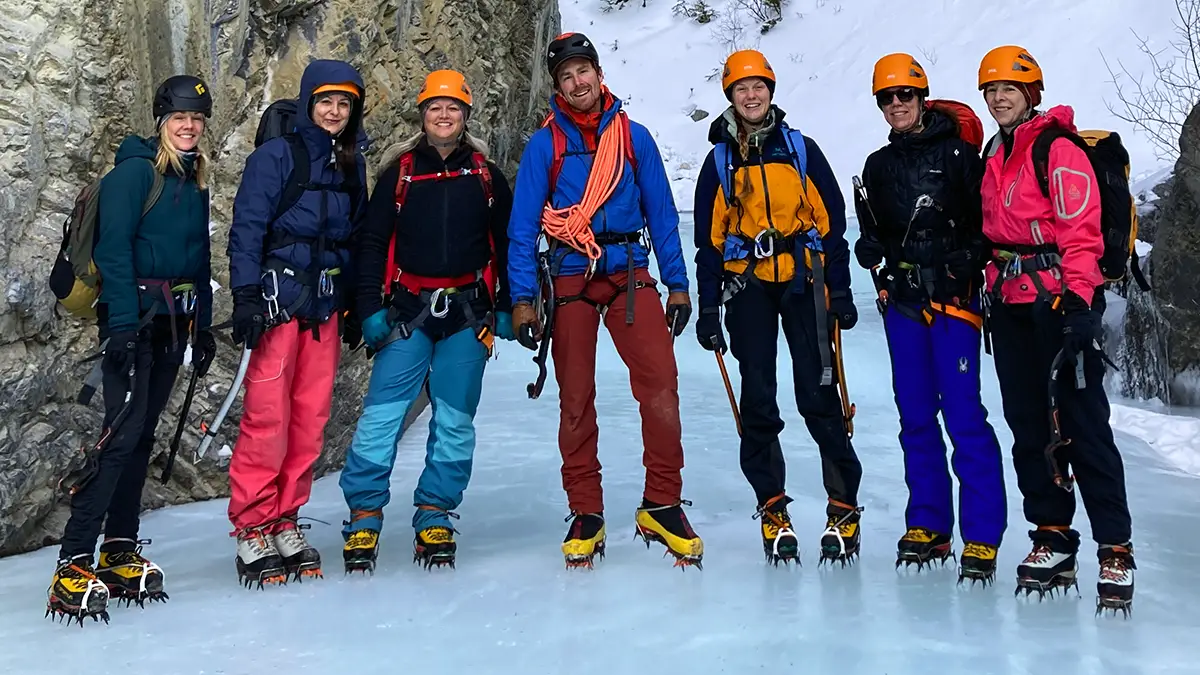
Come Learn to Climb Steep Ice With Us
Mastering steep ice climbing takes patience, practice, and respect for the environment. By preparing thoroughly, refining your technique, and climbing with a trusted partner or guide, you’ll be well on your way to safely tackling steep ice climbs and enjoying the beauty and thrill of frozen landscapes.
Ready to take your skills to the next level? Click to explore our steep ice courses and contact us at booking@girthhitchguiding.ca and we’ll be more than happy to assist you. So what are you waiting for? Book your steep ice climbing trip with us today.



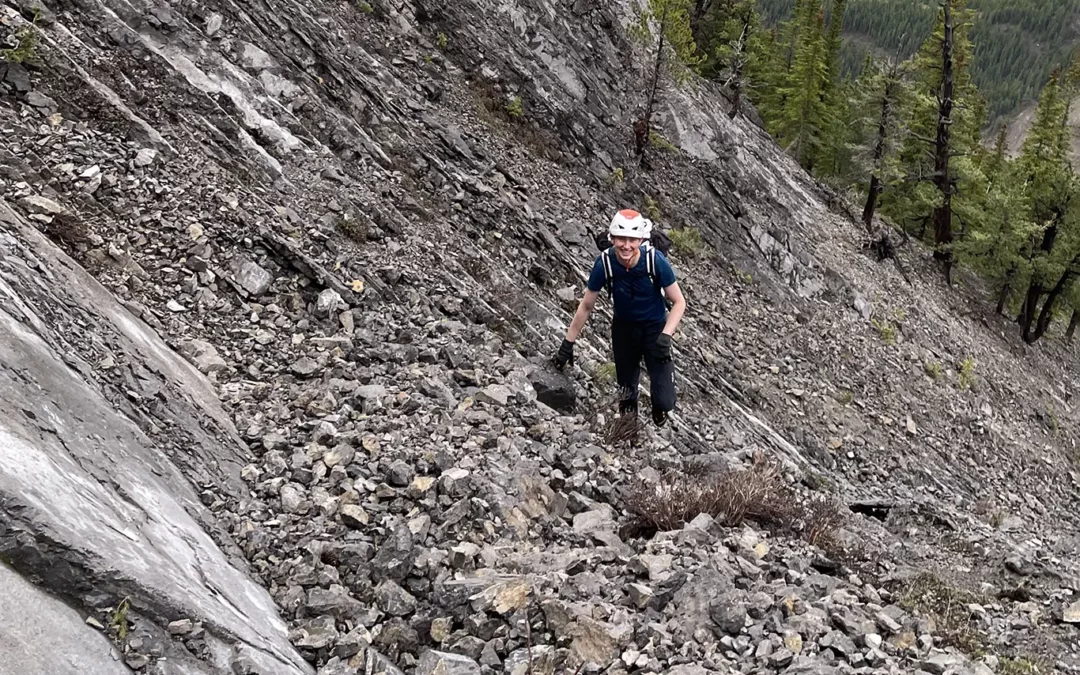
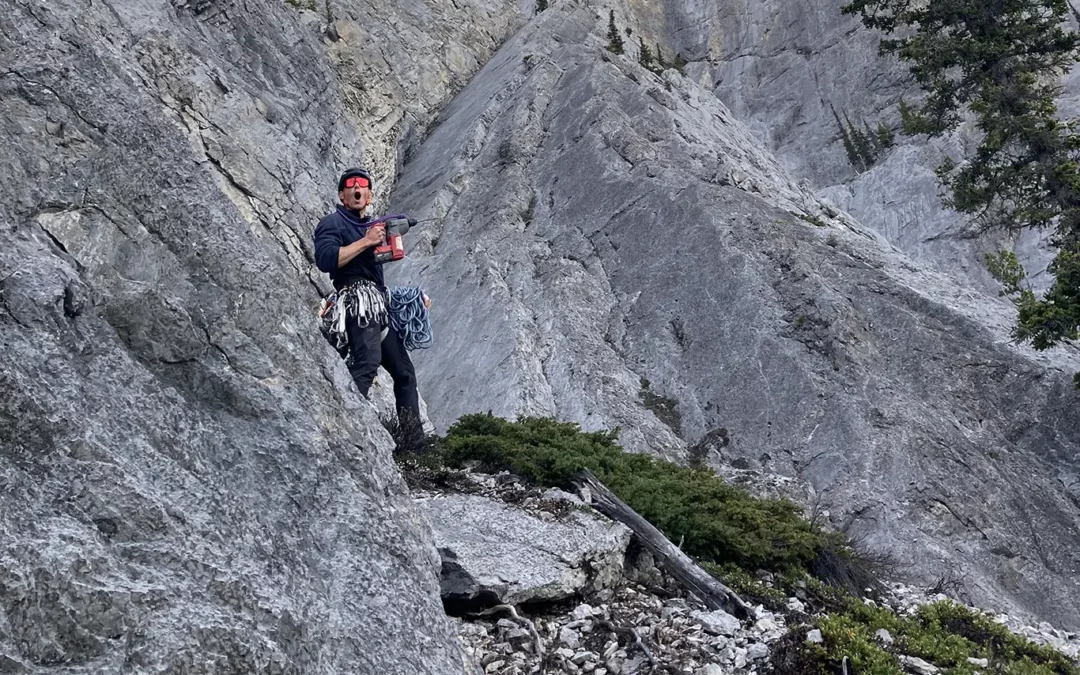
 Need help deciding which trip works for you?
Need help deciding which trip works for you?